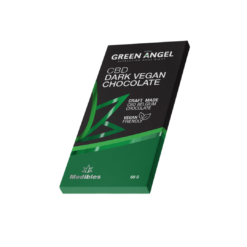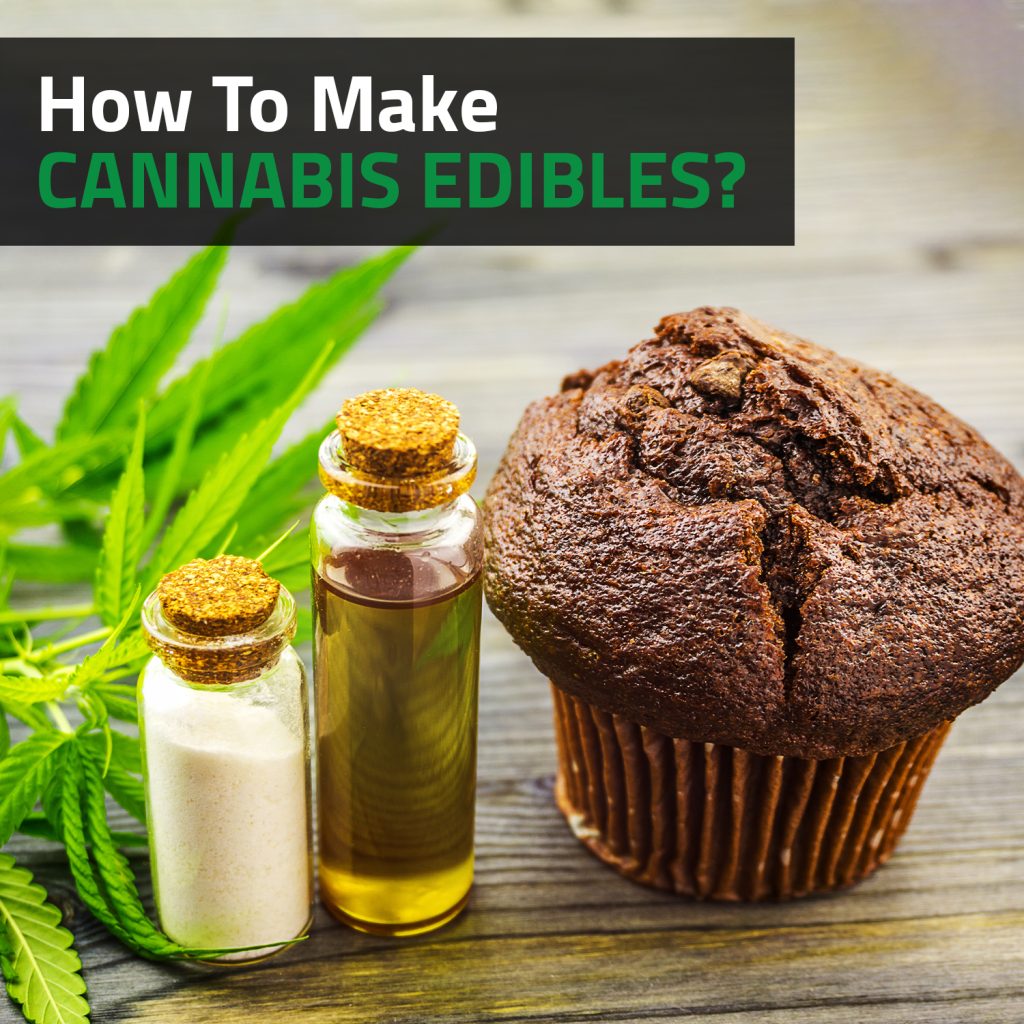Cannabis edibles have rapidly gained popularity as a discrete and enjoyable way to consume cannabis. Unlike traditional methods of smoking or vaping cannabis, edibles offer a unique experience by delivering the effects of cannabis through a variety of delicious treats. Whether you’re a seasoned cannabis enthusiast or someone exploring alternative consumption methods, making your own cannabis-infused edibles can be a rewarding and creative endeavour.
Before you embark on your edible-making journey, it’s essential to familiarise yourself with the basics of cannabis edibles. So, whether you’re looking to alleviate medical symptoms, unwind after a long day, or simply indulge in a new culinary adventure, let’s learn how to make cannabis edibles that are as enjoyable to create as they are to savour.
Understanding Cannabis Dosage and Potency
When it comes to making cannabis edibles, understanding the concept of dosage and potency is crucial. Unlike smoking or vaping cannabis, where the effects are felt almost immediately, the effects of edibles can take longer to kick in and can be more intense and long-lasting. This is due to how the body processes the cannabinoids, particularly delta-9-tetrahydrocannabinol (THC), the primary psychoactive compound in cannabis.
Factors Affecting Edible Potency
- Strain selection: The strain of cannabis you choose plays a significant role in the potency of your edibles. Strains have varying levels of cannabinoids, including THC and cannabidiol (CBD). Some strains are known for their high THC content, while others have a more balanced THC-to-CBD ratio.
- Decarboxylation: Before infusing cannabis into edibles, you need to decarboxylate the plant material. This process involves applying heat to activate the cannabinoids. Without decarboxylation, the non-activated cannabinoids in raw cannabis won’t produce the desired effects when consumed.
- Dosage and ratio: Determining the right dosage of cannabis for your edibles is crucial. It’s recommended to start with a low dose and gradually increase it until you find the desired effect. The ratio of cannabis to the total amount of food or oil used in your recipe also affects potency. Finding the right balance is essential to avoid overwhelming experiences.
Calculating Edible Potency
Calculating the potency of your edibles involves estimating the concentration of THC in your infused ingredient and then determining the dosage per serving. Here’s a basic formula to help you get started:
- Total THC content in cannabis (mg) / Total amount of infused ingredient (g) = THC concentration (mg/g)
- THC concentration (mg/g) * Serving size (g) = Dosage per serving (mg)
Managing Potency
Due to the delayed onset of effects, it’s easy for beginners to consume too much while waiting for the effects to kick in. This can lead to an uncomfortable experience, often referred to as “overconsumption.” To avoid this, it’s essential to wait at least 1–2 hours after consuming an edible before deciding to take more. It’s also advisable to consume edibles in a comfortable and familiar setting, especially if you’re new to their effects.
Choosing The Right Strain For Edibles
Selecting the appropriate cannabis strain is a pivotal step in creating delicious and effective cannabis-infused edibles. The strain you choose will significantly impact the flavour, aroma, and effects of your final product.
Consider The Cannabinoid Profile
Cannabis plants contain a range of cannabinoids, each contributing to the overall effects experienced when consumed. The two most well-known cannabinoids are THC (delta-9-tetrahydrocannabinol) and CBD (cannabidiol). While THC is responsible for the psychoactive “high” associated with cannabis, CBD offers potential therapeutic benefits without the intoxicating effects.
- THC-dominant strains: If you’re aiming for a more euphoric and uplifting experience, consider THC-dominant strains. These strains are known for their higher levels of THC and are often chosen for recreational purposes.
- CBD-dominant strains: If you’re seeking the potential medicinal benefits of cannabis without the strong psychoactive effects, CBD-dominant strains are an excellent choice. They offer relaxation and potential relief from pain, anxiety, and inflammation.
- Balanced strains: Some strains have a relatively equal balance of THC and CBD. These strains provide a more harmonious and well-rounded experience, making them suitable for users who want a combination of both effects.
Decarboxylation: Activating THC For Edibles
Decarboxylation, often referred to as “decarbing,” is a crucial step in preparing cannabis for use in edibles. Raw cannabis contains non-psychoactive cannabinoids in their acidic forms, such as THCA (tetrahydrocannabinolic acid) and CBDA (cannabidiolic acid). These acids need to be converted into their active forms, THC and CBD, through the application of heat. Decarboxylation is the process that achieves this conversion, unlocking the full potential of the cannabinoids for the desired effects in edibles.
How To Decarboxylate Cannabis
Here’s a step-by-step guide to decarboxylating cannabis for your edibles:
- Preparation: Preheat your oven to around 104 °C to 115 °C. Line a baking sheet with parchment paper.
- Grinding: Grind your cannabis to a consistency similar to that of dried herbs. This increases the surface area and ensures even decarboxylation.
- Spread: Spread the ground cannabis evenly on the prepared baking sheet. Avoid overcrowding to ensure uniform heat distribution.
- Baking: Place the baking sheet in the preheated oven for approximately 30 to 45 minutes. Keep a close eye on the cannabis during this time. You’ll notice it undergoes a subtle colour change, transitioning from bright green to a slightly darker, brownish-green hue.
- Cooling: Once decarboxylation is complete, remove the baking sheet from the oven and allow the cannabis to cool. It’s now ready for infusion into your chosen edible recipe.
Selecting Ingredients For Cannabis-Infused Edibles
Choosing the right ingredients for your cannabis-infused edibles is essential for creating flavourful and enjoyable treats. The ingredients you select not only impact the taste and texture of your final product but also affect the overall experience of consuming cannabis.
Fat-Based Ingredients
Cannabinoids, such as THC and CBD, are fat-soluble compounds. This means they bind well with fats and oils, making these ingredients ideal for infusing cannabis. Common fat-based ingredients include:
- Butter: Cannabis-infused butter, also known as “cannabutter,” is a popular choice for baking cookies, brownies, and other baked goods.
- Oil: Cooking oils like coconut oil, olive oil, and vegetable oil can be infused with cannabis and used in a variety of recipes, from sautéing to salad dressings.
- Cream: Heavy cream or half-and-half can be used for creating rich and creamy infusions for desserts, sauces, and beverages.
Sweeteners
- Sugar: Granulated sugar can be infused and used in recipes ranging from candies to cakes.
- Honey: Cannabis-infused honey adds a unique touch to teas, toast, and even marinades.
- Maple syrup: Infused maple syrup can enhance pancakes, waffles, and other breakfast items.
Flour And Baking Ingredients
When using cannabis-infused ingredients in baking, consider the type of flour and leavening agents that will work best for your recipe.
Flavour Enhancers
Herbs, spices, and flavour extracts can help mask the taste of cannabis and add depth to your edibles. Vanilla, cinnamon, nutmeg, and citrus zest are popular choices.
Dairy And Dairy Alternatives
For recipes that require milk or its alternatives, such as almond milk or soy milk, you can infuse these ingredients to create infused beverages and creamy sauces.
Savoury Ingredients
Infused oils and butters can be used in savoury dishes like pasta, stir-fries, and soups. Just make sure the cannabis flavour compliments the overall dish.
Chocolate And Cocoa
Cannabis-infused chocolate and cocoa can be used in various desserts and beverages. Keep in mind that chocolate’s flavour can help mask the taste of cannabis.
Basic Recipe: Cannabis-Infused Butter
Cannabis-infused butter, is a versatile and foundational ingredient for a wide range of cannabis-infused recipes. It’s the cornerstone of many baked goods, desserts, and savoury dishes. Here’s a step-by-step guide on how to make cannabis-infused butter at home.
Ingredients
- 1 cup unsalted butter (two sticks)
- 7-10 grams of decarboxylated cannabis flower (adjust for potency)
- Water
Equipment
- Saucepan
- Wooden spoon or spatula
- Cheesecloth or fine mesh strainer
- Bowl
- Airtight container for storage
Instructions
- Decarboxylation: Begin by decarboxylating your cannabis. Preheat your oven to 104 °C. Grind your decarboxylated cannabis to a coarse consistency. This helps increase the surface area for optimal infusion.
- Infusion: In a saucepan, melt the butter over low to medium heat. Once melted, add the ground cannabis and stir well to combine. The cannabis should be fully immersed in the butter.
- Simmer: Maintain a low heat (around 71 °C to 93 °C) and let the mixture simmer gently for 2 to 3 hours. Stir occasionally to prevent the mixture from sticking to the bottom of the pan.
- Straining: After simmering, remove the saucepan from the heat and let the mixture cool slightly. Place a cheesecloth or fine mesh strainer over a bowl and carefully strain the infused butter mixture to separate the plant material from the liquid. Squeeze the cheesecloth to extract as much liquid as possible.
- Cooling and solidifying: Allow the strained cannabis-infused butter to cool and solidify at room temperature. Once it’s solid, you can place it in the refrigerator to speed up the process.
- Separation: As the butter solidifies, it may separate into two layers. The top layer will be the infused butter, and the bottom layer will be water. Carefully remove the top layer of infused butter from the water layer.
- Storage: Store your cannabis-infused butter in an airtight container in the refrigerator. Properly labelled containers are essential to prevent accidental consumption.
Step-By-Step Guide: Making Cannabis Oil
Cannabis-infused oil is another versatile base ingredient that can be used in a wide variety of recipes, both sweet and savoury. It’s particularly well-suited for recipes that require cooking at higher temperatures, as oil has a higher smoke point compared to butter.
Ingredients
- 1 cup of a cooking oil of your choice (e.g., coconut oil, olive oil, vegetable oil)
- 7–10 grams of decarboxylated cannabis flower (adjust for potency)
Equipment
- Saucepan
- Wooden spoon or spatula
- Cheesecloth or fine mesh strainer
- Bowl
- Airtight container for storage
Instructions
- Decarboxylation: Begin by decarboxylating your cannabis. Preheat your oven to 104 °C. Grind your decarboxylated cannabis to a coarse consistency, similar to dried herbs.
- Infusion: In a saucepan, heat the chosen cooking oil on low to medium heat. Add the ground cannabis to the oil and stir well to combine. Ensure that the cannabis is fully immersed in the oil.
- Simmer: Maintain a low heat (71 °C to 93 °C) and let the mixture simmer gently for 1 to 2 hours. Stir occasionally to prevent sticking.
- Straining: After simmering, remove the saucepan from the heat and let the mixture cool slightly. Place a cheesecloth or fine mesh strainer over a bowl and strain the infused oil to separate the cannabis material from the liquid.
- Squeezing: Press the cannabis material in the cheesecloth to extract as much oil as possible. This ensures that you extract all the infused oil.
- Cooling: Allow the strained cannabis-infused oil to cool to room temperature. Once cooled, transfer it to an airtight container.
- Storage: Store your cannabis-infused oil in a cool, dark place, away from direct sunlight and heat. Properly labelled containers help prevent accidental consumption.
Creating Cannabis Tinctures For Edibles
Cannabis tinctures are liquid extracts that offer a discrete and versatile way to infuse cannabis into various recipes. They can be easily added to both sweet and savoury dishes, making them a popular choice for those looking to create infused edibles without the need for fats or oils.
Ingredients
- 1 cup of high-proof alcohol (e.g., Everclear, vodka)
- 7–10 grams of decarboxylated cannabis flower (adjust for potency)
Equipment
- Glass jar with a lid
- Cheesecloth or fine mesh strainer
- Bowl
- Dropper bottles for storage
Instructions
- Decarboxylation: Begin by decarboxylating your cannabis. Preheat your oven to 104 °C. Grind your decarboxylated cannabis to a coarse consistency.
- Jar preparation: Place the ground cannabis in a glass jar with a tight-fitting lid.
- Alcohol infusion: Pour the high-proof alcohol over the cannabis in the jar until it is fully covered. Stir gently to ensure all the cannabis is submerged.
- Sealing and storage: Seal the jar with the lid and store it in a cool, dark place. Let the mixture sit for a few weeks, gently shaking the jar daily. The alcohol will extract the cannabinoids from the cannabis.
- Straining: After the steeping period, strain the mixture through a cheesecloth or fine mesh strainer into a bowl. Squeeze the cheesecloth to extract all the liquid.
- Bottling: Transfer the strained tincture into dropper bottles for easy and precise dosing.
Embarking on the journey of making cannabis edibles opens up a world of creativity and culinary exploration. From the careful selection of strains to the meticulous process of decarboxylation and infusion, crafting cannabis-infused treats is a blend of science and artistry. The rewards are not only in the delicious flavours and aromas you’ll create, but also in the unique experiences and effects you’ll offer to those who enjoy your creations.
As you venture into the world of cannabis-infused edibles, remember to prioritise safety, responsible consumption, and accurate dosing. Start with lower doses, be patient with the onset of effects, and always label your creations clearly.










